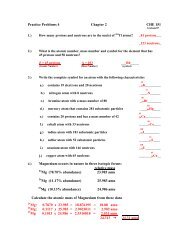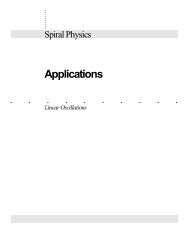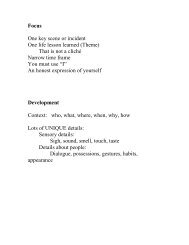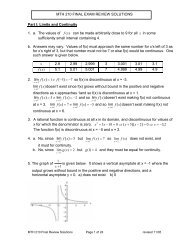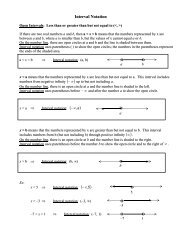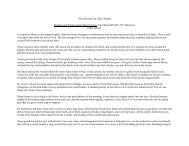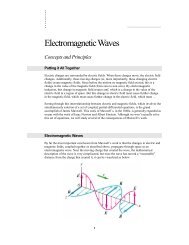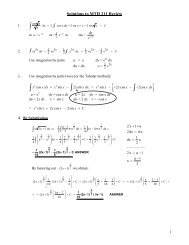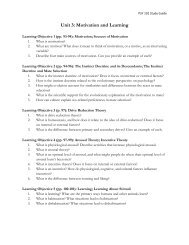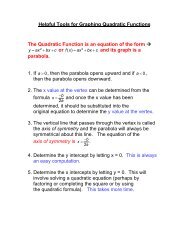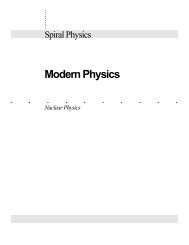Some Notes on Form and Function of the Line and Line Endings in ...
Some Notes on Form and Function of the Line and Line Endings in ...
Some Notes on Form and Function of the Line and Line Endings in ...
You also want an ePaper? Increase the reach of your titles
YUMPU automatically turns print PDFs into web optimized ePapers that Google loves.
End <str<strong>on</strong>g>Notes</str<strong>on</strong>g><br />
1 All <strong>of</strong> <strong>the</strong> examples <strong>in</strong> secti<strong>on</strong> <strong>on</strong>e discuss l<strong>in</strong>es <strong>in</strong> terms <strong>of</strong> tangible objects <strong>in</strong> <strong>the</strong> physical<br />
world. But l<strong>in</strong>es also relate to auditory impressi<strong>on</strong>s, particularly those <strong>in</strong> music or organized<br />
sound. For <strong>in</strong>stance, a s<strong>in</strong>ger’s vocal range will determ<strong>in</strong>e <strong>the</strong> k<strong>in</strong>d <strong>of</strong> l<strong>in</strong>es <strong>of</strong> musical notati<strong>on</strong> he<br />
or she can s<strong>in</strong>g. Vocalist Mary J. Blige has a deep voice with a restricted range, which means <strong>the</strong><br />
notes she s<strong>in</strong>gs will appear close toge<strong>the</strong>r <strong>on</strong> a musical staff without mov<strong>in</strong>g dramatically up or<br />
down. Mariah Carey is ano<strong>the</strong>r matter entirely. She can s<strong>in</strong>g four or five octaves—<strong>and</strong> usually<br />
does. As a result, any given s<strong>on</strong>g she performs will be represented <strong>in</strong> music notati<strong>on</strong> by dramatic<br />
ris<strong>in</strong>g <strong>and</strong> fall<strong>in</strong>g. Nei<strong>the</strong>r vocalist’s style is better or worse because <strong>of</strong> <strong>the</strong> type <strong>of</strong> l<strong>in</strong>es she s<strong>in</strong>gs.<br />
The real questi<strong>on</strong> is whe<strong>the</strong>r or not <strong>the</strong> l<strong>in</strong>e each uses is appropriate for what she wishes to<br />
communicate through her music.<br />
2 It is worth not<strong>in</strong>g that <strong>the</strong> reiterative “I have” may also reflect an idiomatic speech pattern <strong>of</strong><br />
some<strong>on</strong>e unaccustomed to St<strong>and</strong>ard English. (A student told me <strong>on</strong>ce that she remembers farmers<br />
<strong>in</strong> Scotl<strong>and</strong> <strong>and</strong> Nor<strong>the</strong>rn Engl<strong>and</strong> talk<strong>in</strong>g <strong>in</strong> this way.)<br />
3 If stanza means “room” <strong>in</strong> Italian, perhaps <strong>the</strong>n, <strong>the</strong> poem might be likened to a house. If <strong>the</strong><br />
poem has three stanzas, <strong>the</strong>n <strong>the</strong> house has three rooms. Each space between a stanza might be a<br />
hallway for <strong>the</strong> reader to walk through <strong>in</strong> order to reach <strong>the</strong> next room. Those poems with no<br />
stanza breaks might be c<strong>on</strong>sidered similar to a large l<strong>of</strong>t space with no walls or separati<strong>on</strong>.<br />
22



